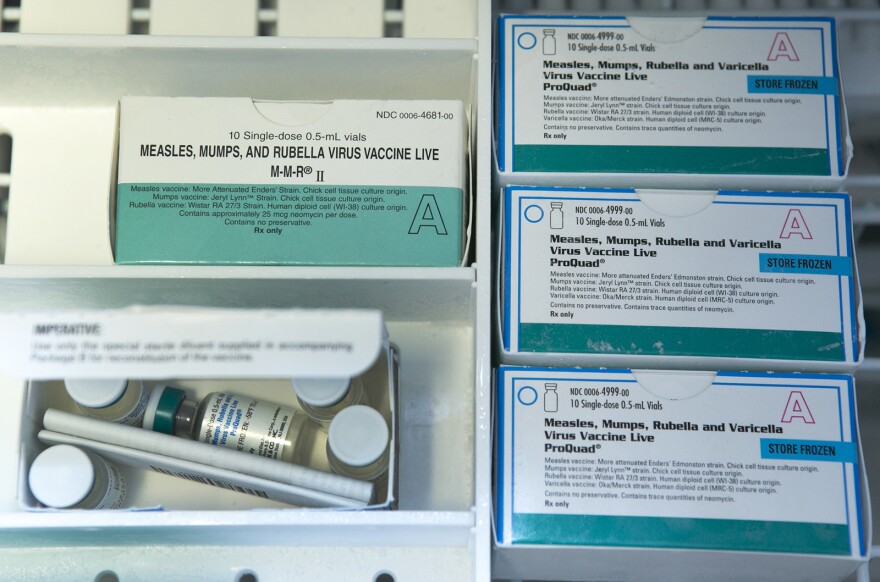Vaccination rates of school children in Allegheny County have been on a slow decline since 2017, but the decline has become more severe in the past two years during the COVID-19 pandemic, according to a report released by the health department.
“Unfortunately, due to a decrease in vaccination rates across the county, we are seeing preventable diseases such as polio reemerge,” said Health Department Director Dr. Debra Bogen said in a news release. “We must not allow these diseases back into our lives when we have the tools to prevent them.”
Still, the county is above the national average of a 95% vaccination rate for required vaccinations for diseases such as vaccines for polio and meningitis. (The vaccine for COVID-19 is not required.) Health department officials said they believe the current vaccination rate of 95.3% will protect against most disease outbreaks.
“We're not too concerned because it's really been quite a small decline,” said Dr. Kristen Mertz, the medical epidemiologist for the health department.
More than 148,000 students in Allegheny County were fully vaccinated in December, when the study was done. But about 5,000 students attend school in the county but don’t get their full vaccines because of a religious, moral/philosophical or medical exemption — a number that has been increasing in recent years.
More than 95% of students who attend public schools and public charter schools were fully vaccinated as of December, but that number falls to fewer than 92% at private independent schools.
Chart: https://datawrapper.dwcdn.net/GqhG5/1/
The health department particularly focuses on improving vaccination rates at schools where the vaccination rate is less than 85%, Mertz said, although its recent report doesn’t identify those schools.
“I don't think we're at risk for large outbreaks given our high rates, but we definitely have pockets of places where there are lower vaccination rates,” she said. “So there could be small clusters of disease in those areas. So we really like to try to identify those pockets and work with those communities to get the rates up.”
The pandemic has also had an impact, particularly in grades 7 and 12. Students in those grades are required to supplement the vaccines they receive before kindergarten. About 4% fewer students in grades 7 and 12 received their vaccinations during the pandemic than in the previous five years.
“People had less access to health care or less willing to go seek health care, so may not have gotten the shots that they usually would have gotten,” Mertz said.
This issue was particularly pronounced in the county’s private schools this year, where less than 82% of 7th-graders and less than 88% of 12th-graders were fully vaccinated.
But Mertz said most 7th-graders eventually get their shots by 8th grade, for example, so the declines are temporary for many students.
So far, Mertz said, the kind of misinformation that has been spread about the COVID-19 vaccine doesn’t seem to have had much impact on parents’ willingness to give their children other vaccines. But she said the health department is continuing to work with school nurses, pharmacies and health clinics to increase the vaccination rate.
“We're working with all those groups to try to get the rates back up to where they were before,” she said. “But we still are pretty proud of our rates.”





